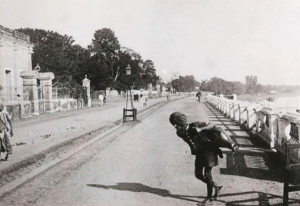Researching the Bits
This is one in a series of blog posts (without spoilers!) about the writing process for The Lantern’s Dance.
Sometimes, I go into a book knowing a fair amount about the setting and situation. Other times, I just know enough to know it’s interesting—but there will be work involved to flesh it out.
The Lantern’s Dance was supposed to be my 2022 book, until Covid made a 2020 research trip to France a bit tricky. Which was actually fine, because without that impetus I might not have discovered Raquel Laing and the pleasures of writing Back to the Garden, but when time came to follow Russell and Holmes across Europe after Castle Shade, that still left me with the question of how to get what I would need to permeate a book with the myriad details of life in 1920s France.
Weird health problems—mine, rather than the entire world’s—have made international travel even less of a joy that it was before 2020. If I hadn’t hesitated to climb onto a plane, if I’d just booked a flight for Paris and committed to the story line I had to begin with, Russell #18 would have ended up a very different story from the one that’s coming out in February.
Instead, I’d had an extra year to think about it, and realized that what I wanted to write wasn’t a straightforward novel set in Paris. Back to the Garden made me interested in the structure of cold-case stories, where the past comes to visit the present. And at any rate, I’d already written a solidly Parisian story with Bones of Paris.
So I looked at my two characters, Mary Russell and Sherlock Holmes, and decided that a book involving Holmes’ son, Damian Adler (if you read The Language of Bees or God of the Hive, you’ve met him) should also involve Holmes’ greater past, with a mystery from Holmes’ distant past.
There’s a journal, filled with sequential images—a sort of zoetrope of autobiography. Some of those images have to do with the early 19th century French-Indian colony of Chandernagore (to use its old spelling.) That was one deep research hole I had to dive into.
Other journal images follow the travels of the journal’s author, first from France to India—by sailing ship, around the Horn and touching on ports of call along the way up India’s Eastern coast—then a few years later, back from India to France, this time by steamer and, rather than around the Horn, up through the Red Sea, then overland to Cairo to the Nile. Another set of intricate research closely tied to dates and historical facts.
And when we finally make it back to Paris, we’re still way before the Eiffel Tower and Haussmann’s vast renovations of the city, so…another set of online searches, close examinations of paintings and early daguerreotypes, and perusals of out-of-print books.
And, naturally, the places the plot focuses in on, such as a fort on the outskirts of Paris.
Because sometimes you travel on a plane…and other times you travel in your imagination.
**
You can pre-order The Lantern’s Dance from: Bookshop Santa Cruz (signed); Poisoned Pen Books (signed); Bookshop.org (supporting Indie booksellers); Barnes & Noble; or Amazon. (Plus, register here for a pre-order bonus!)
**
Images: The Strand at Chandernagore; Paris, 1838, from the Wikipedia article on Daguerreotype; map, Baedeker’s Paris 1920.




I was a tad excited when I clicked, then I saw ” US only”… (I do understand why, though!) Not long now.
Research is beautiful in itself, in addition to what great things come of it!
I was working for the defense in a first-degree felony case, and it was critical that we obtain birth information from the 1930s, in a hospital that’s now closed.
I called the records librarian who’d inherited custody of those files and told her what I needed.
She said, “Do you know how many ratty old boxes we have of their stuff? I could spend years looking for what you need!”
I said, “No, you don’t. Go to Cabinet X, Shelf 13, and you’ll see the 1930s births box.”
She basically said, “WTH?”
I said, “Some grad student catalogued those records, and I guess all their work fell into the abyss. But The Google really is a wonderful thing.”
Hah–a patron who knew more than the research librarian, that doesn’t happen often!
Laurie
I love the research, just not the output. Going down the proverbial rabbit hole is great fun. I so admire writers that can take all the bits and pieces and sew them into an intelligent and interesting story!
Rabbit holes of research are indeed soooo tempting…
Laurie
The results of all that work look so natural and seamless, it’s good to be reminded of the serious research behind it. Thanks for all you do! <3
Thank you!
L.
I agree with all of the comments about the research and detail in the Lanterns dance. I do really miss the bantering and and intellectual intimacy between Mary and Holmes. The way their relations demonstrates very little to no communication or caring for each other makes it seem as though they are not Evan married. Why even have them married if you do not want them to demonstrate what each one offers the other. Story line here made the reader to stay on there toes really follow this story line..Wow